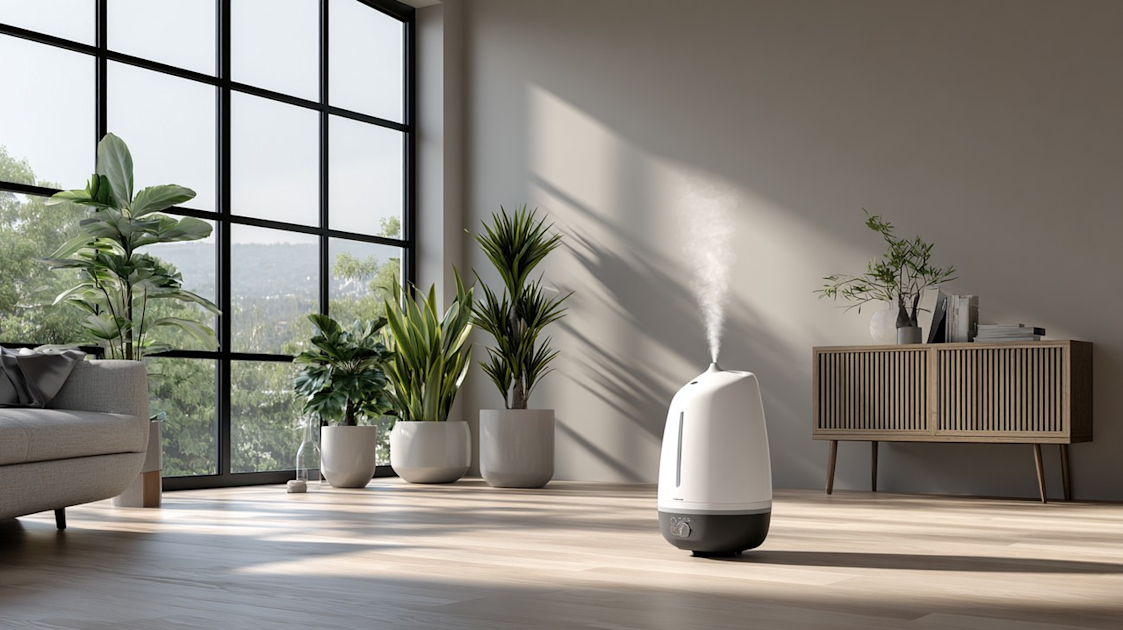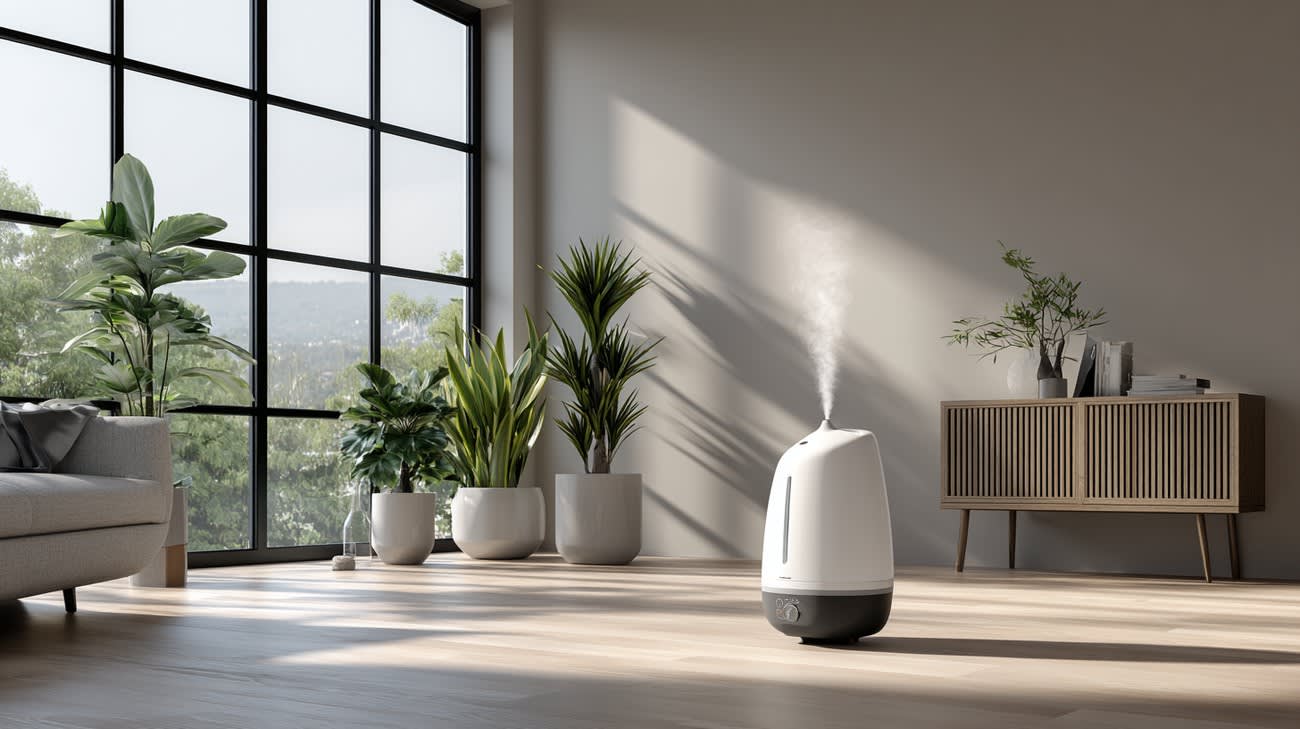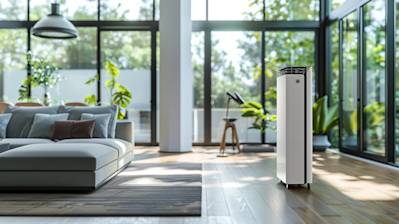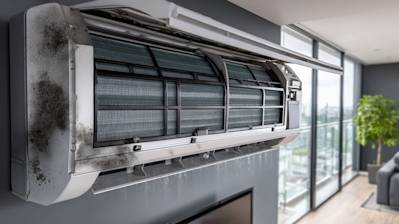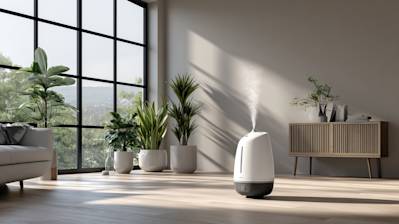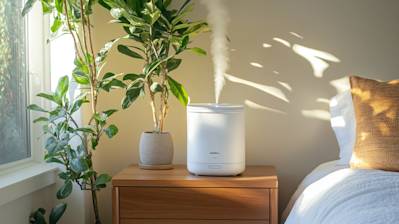Living in a space where the humidity is balanced can significantly improve your comfort and health. Two appliances that can help you achieve this balance are humidifiers and dehumidifiers. Although they may sound similar, their functions and benefits are quite distinct. In this detailed guide, we will explore the differences between humidifiers and dehumidifiers, delve into their unique benefits, and help you determine which one best suits your needs.
What is a Humidifier?
A humidifier is a device designed to add moisture to the air in your home. It is particularly useful during the winter months or in arid climates where the air tends to be dry, often leading to dry skin, irritated sinuses, and respiratory issues.
Key Functions of Humidifiers:
- Increase indoor humidity levels
- Alleviate allergy symptoms
- Relieve dry skin and eyes
- Improve respiratory health
Types of Humidifiers
Humidifiers come in various forms, each with unique features suited to different needs. Here’s a closer look at the types of humidifiers available:
- Ultrasonic Humidifiers: Use ultrasonic vibrations to produce a cool mist, making them whisper-quiet and energy-efficient.
- Evaporative Humidifiers: Utilize a fan to blow air through a moistened filter, naturally increasing humidity levels.
- Steam Vaporizers: Boil water to create steam and then cool it slightly before dispersing into the air, effectively killing germs in the process.
- Impeller Humidifiers: Employ rotating disks to generate a cool mist, ideal for smaller rooms.
What is a Dehumidifier?
In contrast, a dehumidifier removes excess moisture from the air, making it indispensable in humid environments or during summer months. High humidity levels can lead to various issues, including mold growth, dust mites, and discomfort.
Key Functions of Dehumidifiers:
- Reduce indoor humidity levels
- Prevent mold and mildew
- Improve air quality
- Decrease discomfort in humid climates
Types of Dehumidifiers
Dehumidifiers also vary in design and function. Here are the common types you’ll encounter:
- Refrigerant (or Compressor-based) Dehumidifiers: Utilize refrigeration coils to cool air, condensing moisture, suitable for warm climates.
- Desiccant Dehumidifiers: Use a moisture-absorbing material to extract humidity, effective in cooler temperatures.
- Whole-House Dehumidifiers: Integrated with HVAC systems, managing humidity levels throughout the entire home.
- Thermo-Electric Peltier Dehumidifiers: Small and silent, perfect for small spaces like closets or bathrooms.
How to Choose Between a Humidifier and Dehumidifier
Selecting between a humidifier and dehumidifier largely depends on your specific needs and environmental conditions. Here are some aspects to consider:
Identifying Your Home's Humidity Levels
Begin by measuring the current humidity levels in your home. Hygrometers can help you determine whether your indoor environment is too dry or too humid. Ideal indoor humidity levels lie between 30% and 50%.
- If levels are below 30%, consider a humidifier.
- If levels are above 50%, a dehumidifier may be needed.
Health Considerations
Consider any health problems exacerbated by either too dry or too humid environments. Both dry air and excessive humidity can affect conditions like allergies, asthma, or respiratory issues.
Seasonal Needs
- In winter, when heating systems typically dry out the indoor air, a humidifier can restore moisture.
- Conversely, during the summer, particularly in regions with high humidity, a dehumidifier can reduce discomfort and prevent dampness.
Maintenance and Care
Proper care is essential for both humidifiers and dehumidifiers to function effectively and avoid the build-up of bacteria or mold.
Maintenance Tips for Humidifiers:
- Clean the water tank regularly to prevent mold and bacteria growth.
- Use distilled or demineralized water to minimize mineral deposits.
- Replace filters as recommended by the manufacturer.
Maintenance Tips for Dehumidifiers:
- Empty and clean the water collection reservoir frequently.
- Clean or change air filters regularly.
- Inspect and clean the dehumidifier coils periodically.
Energy Considerations
When selecting either a humidifier or dehumidifier, it's also essential to consider energy consumption:
- Humidifiers generally consume less energy, especially ultrasonic models. Opt for models with energy-saving features for cost-effective operation.
- Dehumidifiers can vary significantly in energy usage. Look for models with Energy Star ratings for efficient energy consumption.
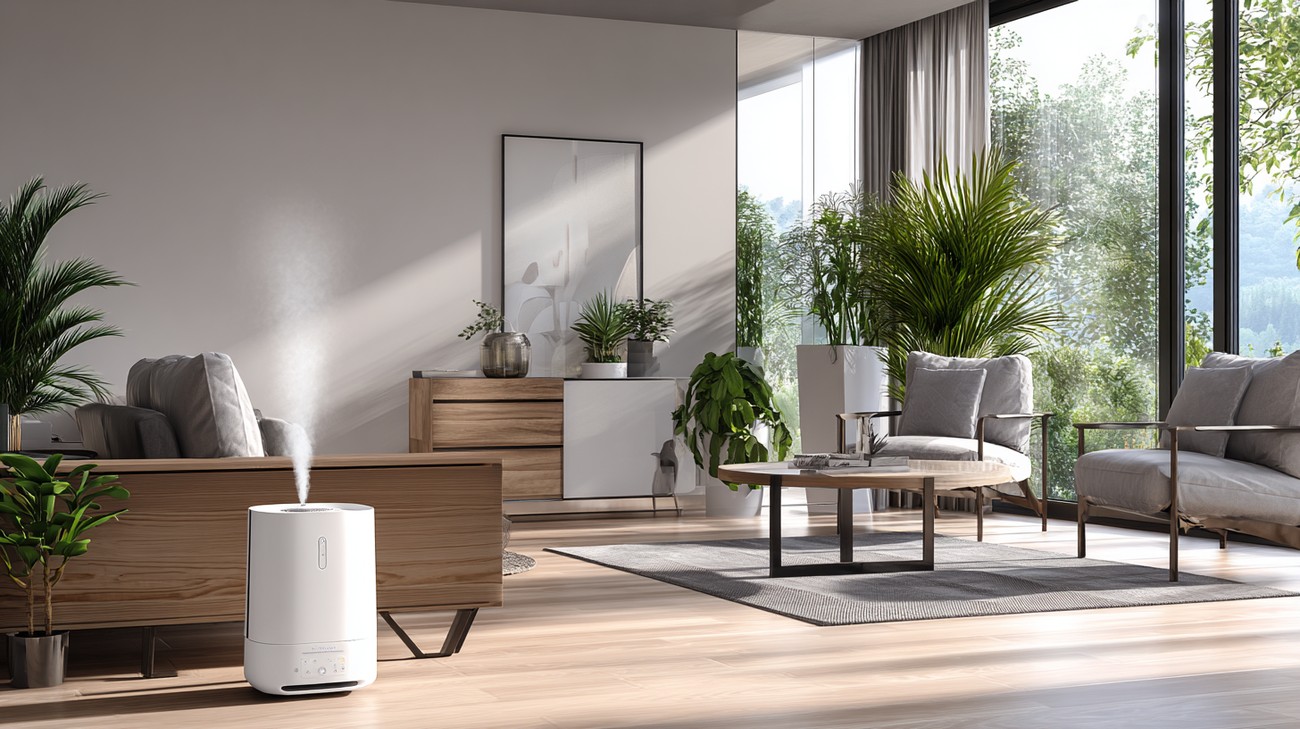
Frequently Asked Questions about Humidifier Vs Dehumidifier
What is the primary purpose of a dehumidifier?
The main function of a dehumidifier is to remove excess moisture from the air, helping to reduce humidity levels. This device operates by drawing in damp air and passing it over cold coils, which cause the moisture to condense and collect in a tank or be drained away. Dehumidifiers are particularly useful in preventing mold growth, reducing dust mites, and alleviating allergy symptoms in humid environments. By lowering humidity, they also protect furniture, electronics, and even the structural integrity of a home from the damaging effects of excessive moisture.
Can a humidifier and a dehumidifier be used simultaneously?
Yes, using both a humidifier and a dehumidifier in the same space is possible, but generally not in close proximity and not at the same time in the same room. The need for each device depends on the specific humidity conditions of your environment. You might consider using them in opposing seasons – a humidifier during dry winters and a dehumidifier in moist summers. Some homes have varied climates in different areas; one room might benefit from a humidifier while another from a dehumidifier. It's essential to monitor humidity levels to decide which device to use and when for optimal comfort and health.
How can I determine if I need a humidifier or a dehumidifier?
To ascertain whether you need a humidifier or a dehumidifier, you should measure the humidity levels in your home using a hygrometer. Ideally, indoor humidity should be between 30-50%. If the humidity level consistently falls below 30%, a humidifier can help add necessary moisture to the air. Conversely, if the level is frequently above 50%, a dehumidifier will be beneficial in removing excess moisture. Pay attention to signs of dryness or excess humidity, such as frequent nosebleeds, static electricity, mold growth, or condensation on windows, to guide your choice.
What are the health benefits of using a humidifier?
A humidifier offers several health benefits, particularly in alleviating symptoms of dryness. It can help soothe dry skin, throats, and nasal passages, reducing irritation. Humidifiers also ease symptoms of colds and flu by keeping the respiratory tract moist, which can facilitate quicker recovery. They may help prevent dry eyes and reduce the frequency of nosebleeds. By maintaining optimal moisture levels, humidifiers can create a more conducive environment for restful sleep, improve breathing comfort, and contribute to overall well-being in arid indoor settings.
Why should I use a dehumidifier in my home?
Using a dehumidifier is vital in areas with high humidity levels as it helps maintain a healthier home environment. Excess moisture can lead to mold and mildew growth, which can exacerbate allergies and respiratory issues. A dehumidifier prevents these issues by controlling humidity levels, thereby reducing dust mites, mold spores, and musty odors. It also helps protect your home’s infrastructure, furniture, and belongings from moisture damage. Furthermore, by drying out the air, a dehumidifier makes the air conditioning more efficient, often resulting in lower energy costs.
How do I know which size humidifier or dehumidifier to buy?
The size of humidifier or dehumidifier you need depends on the room's dimensions and the existing humidity levels. For humidifiers, smaller units suffice for individual rooms or offices, while larger whole-house humidifiers might be needed for bigger spaces. For dehumidifiers, the capacity is often measured in pints of moisture removed daily. Consider room size and humidity severity when selecting a dehumidifier. Manufacturers typically provide guidelines based on square footage and existing moisture conditions, so reviewing these recommendations is essential to choose the right device for your needs.
Are there specific maintenance requirements for humidifiers?
Indeed, humidifiers have specific maintenance requirements to ensure they function correctly and remain hygienic. Regular cleaning is crucial to prevent mold and bacteria build-up, which could be dispersed into the air if neglected. You should empty and refill the water tank daily, using distilled or demineralized water to reduce mineral deposits. A weekly deep cleaning with recommended solutions will keep the unit in optimal condition. Replace filters regularly if your humidifier has them, and always follow the manufacturer's instructions for maintenance to ensure safety and efficiency.
What maintenance is needed for a dehumidifier?
Maintaining a dehumidifier primarily involves regular cleaning and checking for blockages in the filter or drainage system. Empty the water collection bucket frequently or ensure proper drainage if connected to a hose. Clean the filter if your model has one, and inspect the coils and air vents for dust accumulation, cleaning as needed. It’s vital to follow the manufacturer's guidelines regarding maintenance intervals, as neglecting regular upkeep can affect the performance and lifespan of your dehumidifier. Additionally, ensure the unit is unplugged before performing any maintenance tasks.

Comparison
When it comes to managing indoor air quality, humidifiers and dehumidifiers play important but distinct roles. Choosing the right device depends on your specific needs, environmental conditions, and budget. We'll compare three top choices from each category, highlighting key features, performance, price, and best use scenarios. To wrap up, we'll provide our bottom-line recommendation to help you make an informed decision.
Key Features Comparison
Let's start by examining the essential features of each category's top contenders.
| Device | Key Features |
|---|---|
| Pure Enrichment MistAire Humidifier | Ultrasonic cool mist, 1.5-liter tank, night light option, auto shut-off |
| Levoit Humidifier LV600HH | Warm and cool mist, 6-liter capacity, built-in humidity sensor |
| Vicks Filter-Free Humidifier | Filter-free operation, 1-gallon tank, visible mist output |
| hOmeLabs Dehumidifier | 1,500 sq. ft. coverage, 22 pints/day removal, quiet operation |
| Frigidaire Dehumidifier FFAD2233W1 | Custom humidity control, 22 pints/day, continuous drainage option |
| GE 50 Pint Dehumidifier | Built-in pump, 50 pints/day, smart dry feature, large home suitability |
Performance Differences
Performance is crucial when it comes to ensuring comfort in your home. Here’s how these devices measure up:
Pure Enrichment MistAire Humidifier is designed for small to medium-sized rooms, quietly delivering a consistent cool mist. It's perfect for bedtime with its night light and automatic shut-off.
Levoit Humidifier LV600HH stands out with its dual mist functionality (warm and cool) and smart features such as an auto mode and built-in humidity sensor. It's a versatile pick for larger rooms.
Vicks Filter-Free Humidifier offers simplicity with a visible mist function and no need for filter replacements. Its performance is reliable, albeit primarily suitable for smaller spaces.
hOmeLabs Dehumidifier excels in medium spaces, effectively removing moisture and features a quiet operation mode ideal for nighttime use.
Frigidaire Dehumidifier FFAD2233W1 provides precise humidity control and efficient moisture removal, suited to varying room sizes with its continuous drainage capability.
GE 50 Pint Dehumidifier features a built-in pump allowing for maximum flexibility in drainage. It's engineered for larger homes, ensuring robust moisture management.
Price Comparison
| Device | Price Range |
|---|---|
| Pure Enrichment MistAire | $30 - $40 |
| Levoit Humidifier LV600HH | $80 - $100 |
| Vicks Filter-Free Humidifier | $35 - $45 |
| hOmeLabs Dehumidifier | $180 - $220 |
| Frigidaire Dehumidifier FFAD2233W1 | $170 - $210 |
| GE 50 Pint Dehumidifier | $250 - $300 |
Best Use Cases for Each
Pure Enrichment MistAire Humidifier: Ideal for bedrooms or offices where quiet operation and a modest mist are desirable.
Levoit Humidifier LV600HH: Best for large spaces demanding sophisticated humidity control and a choice between warm and cool mist.
Vicks Filter-Free Humidifier: Suitable for those seeking straightforward, filter-free maintenance for compact areas.
hOmeLabs Dehumidifier: Effective for moderately sized spaces like basements or living rooms in climates with medium humidity levels.
Frigidaire Dehumidifier FFAD2233W1: Great for sustaining a set humidity level across various room sizes due to its adaptable drainage options.
GE 50 Pint Dehumidifier: Excellent for expansive spaces needing consistent and high-volume moisture extraction capabilities.
Bottom Line Recommendation
Selecting between a humidifier and dehumidifier largely depends on your specific air quality needs. If you require moisture addition due to dryness—common in winter—the Levoit Humidifier LV600HH stands out, offering versatility and advanced features for larger environments.
Conversely, for moisture reduction—typically needed in warmer, humid climates—the GE 50 Pint Dehumidifier is our top pick. Its robust performance and flexible drainage, combined with a built-in pump, make it an exceptional choice for thorough moisture management in expansive areas.
In summary, assess your space and climate to decide whether adding or removing moisture is crucial, then choose accordingly from our recommended options for optimal comfort and air quality.


